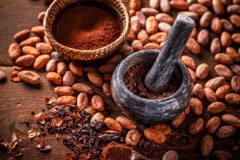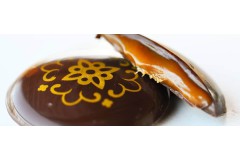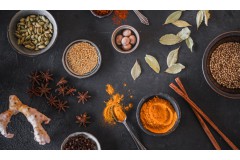This plant made a real world tour in 500 years and has lived well with the commercial and historical adventures of man, to be cultivated almost everywhere.
Today there are more than 140 varieties of peppers with different flavors. There are also good mild peppers, moderately raised peppers up to literally explosive peppers!
But by the way, why this feeling of spice?
The spice manager in a pepper is capsaicin, chemical compound of the family of alkaloids. The highest rate of capsaicin is located on internal membranes, the whitish part at the base of the pepper and which innervates the interior. This part is also called the placenta of the pepper. To its growth it surrounds the seeds, so the seeds are also spicy.
Can we get used to the spice of pepper?
After absorption a certain type of nerves (TRPV, transient receptor vanilloid) is responsible for the burning sensation. Without going into the details of the mechanisms of sensation of burns released by capsaicin, it is actually proven that one disinhibited ourselves with the strength of the chili. Reason why, we can be amazed at certain cultures reveling in peppers at all meals! We therefore understand better how a Mexican can do by ingesting very spicy piques every day.
How to measure the force of a pepper?
Wilbur Scoville, an American pharmacologist, set up a scale to measure the force of peppers.
It takes into account the amount of capsaicin and goes from zero (pepper) to more than 2 million (Carolina Reaper). The measurement is simple: it expresses the number of dilutions necessary to no longer feel the spice of the pepper. An Espelette pepper measured at 2500 on the scoville scale must be diluted 2500 times to no longer feel anything.
There is another more simplified and modeled scale on the Scoville model, of which here are some landmarks:
0 neutral: pepper
1 sweet: Paprika Sweet
2 Warm: sweet pepper
3 Release: Ancho pepper
4 Warm: Espelette pepper
5 Fort: jalapeno, tabasco sauce
6 fiery: Forte
7 Burning: Piment Piquin
8 torrid: bird pepper
9 volcanic: chiltepín pepper
10 explosive: West Indian pepper
We find more and more in the trade of references on this scale. It will give you some benchmarks, and according to your sensitivity, to taste a pepper.
The scale could continue higher but it is quite rare under our regions to find a connoisseur filling with chili more strong than the West Indian pepper! There are certainly even much stronger peppers such as Trinidad Moruga Scorpion or Carolina Reaper which are more the subject of competitions of the highest capsaicin rates by varieties hybrids created only for the expression of a flavor.
tips:
If you have a whole pepper, remove all the whitish parts as well as the seeds, you will greatly reduce the spice of your pepper.
If it's too late, know that capsaicin is not soluble in water but rather in a fatty body. So do not drink absolutely water, rather take a glass of milk or a yogurt to calm the ardor of the pepper!
Max Daumin



